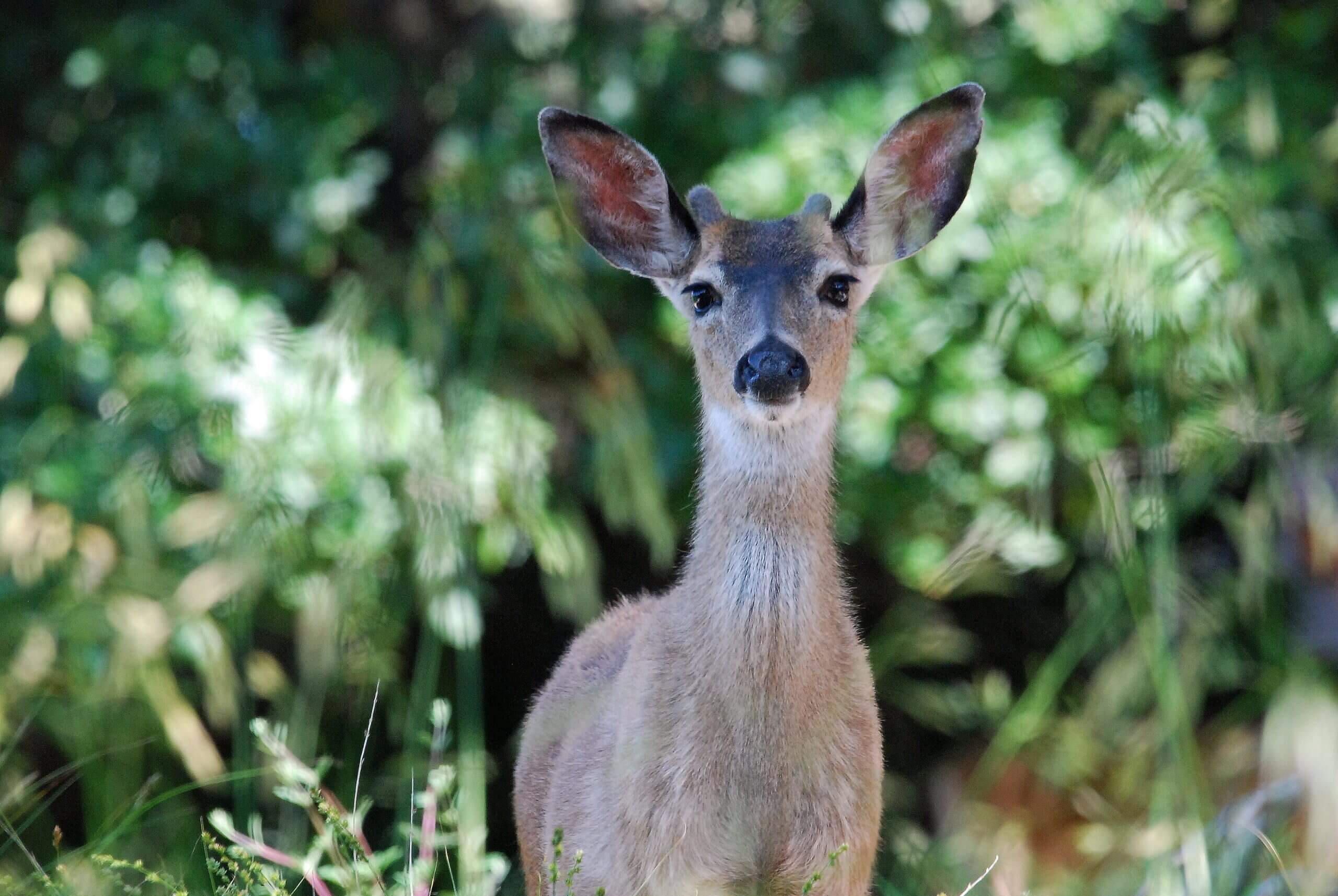In early October, I’m monitoring larvae in all stages on the narrow-leaf milkweed that grows in several large stands on my property. But Monarchs are not the only regal presence on my hillside; it’s the rutting season and a number of very handsome bucks have made themselves visible again. It’s almost comical the way they follow behind the does, their powerful necks outstretched, upper lip curled back to “taste” the smell of a particular doe—all of whom seem to do their best to ignore or avoid them. I imagine it’s tiring, too, and on one afternoon recently, a huge, white-faced buck lay down for a rest under a blue oak not twenty feet away from where I was busy potting up plants; what a treat for me!
The buck’s lip curling reveals a special receptor on the top of the palate (called the Jacobson’s organ) that determines if the doe is in estrus and receptive to mating. The buck’s antlers at this point are smooth and formidable, all the velvet has been rubbed off, and it’s this process that can cause a lot of damage in a garden.
As the mating season approaches, the antlers are fully developed and the velvet (a soft, moss-like skin that nourished the growing antlers) has done its job. Apparently the velvet, as it peels off, is itchy and uncomfortable, like peeling sunburnt skin, so the bucks like to rub on all sorts of things to hasten the shedding. One favored rub is willows, and it’s quite possible that the salicylic acid (an active metabolite of aspirin) contained in the willow bark provides some temporary pain relief.
Antlers are solid bone, grown and discarded every year. The antlers are the fastest growing normal cells of any mammalian tissue, and growing a new set requires a lot of resources early in spring. Co-evolution is displayed in yet another wonderful association between plants and animals; ceanothus species put on a lot of new growth in early spring. This new growth is very high in calcium and thereby provides the perfect browse for the bucks growing their antlers! And, as the deer browse the plant, enzymes in their saliva act as a hormone, spurring on even more new growth!
But during the rut, the bucks will use whatever is around so it is important, especially with young trees, to leave some caging around the trunks. The bucks also like to show off by just ripping up other shrubs; coyote brush (Baccharis pilularis) is one that is often damaged on my hillside, but they are easily pruned back to the base, with fresh new growth, and often a better form, developing during the rainy season.
I’ve protected certain mature shrubs that aren’t so easily salvaged, and deterred the deer by planting really bad smelling plants next to them. A non-native shrub, Mexican marigold (Tagetes lemonnii) with lovely orangey flowers but stinky foliage, works well to protect a beautiful Mexican salvia (Salvia melissadora) from the ravages of the rut. This salvia produces small lavender blooms almost non-stop throughout the year, and is beautiful contrasted with the bright orangey blooms of the marigold. These plants grow in a border along with shrubby buckwheat (Eriogonum fasciculatum) goldenrods and grindelia—all fall bloomers. These plants bring in the butterflies: hundreds of skippers, painted ladies, buckeyes, field crescents, and even monarchs come to nectar at the flowers. October is one of the best months for high populations of butterflies in Marin.

